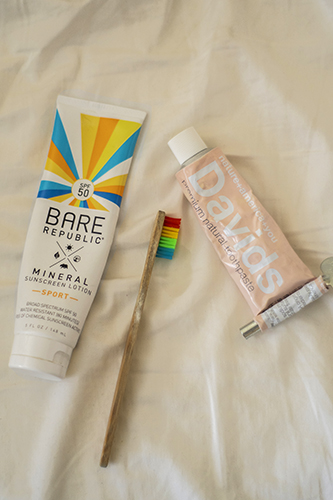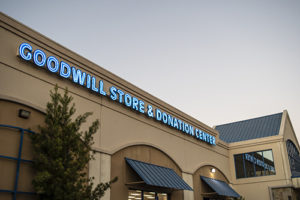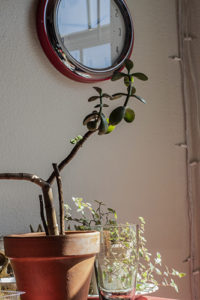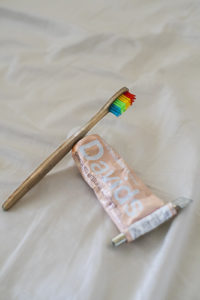4 ways to maintain a more sustainable existence

Sustainability is a combination of social, economic and ecological factors as a way to avoid the depletion of natural resources as a way to maintain ecological balance.
Cal Poly allows its students to be sustainable by offering minors in sustainability, hosting conventions talking about it, placing compost and recycling bins around campus, etc. In addition to these means, students and faculty can continue these practices in their own lives.
Thrifting and E-selling:
Americans alone throw out 10.5 million tons of clothes every year. Retailers are putting clothes out faster and faster than they used to. Sixty percent of clothes produced today are made out of synthetic fabrics, like polyester, that can sit in landfills forever.
Thrift shopping became popular pretty recently since buying clothes second hand lessens pollution and does not waste resources. Additionally, profits from thrift shops can go to charity and have fairly low, and reasonable prices, making the clothing more accessible for lower income individuals.

For example, the profits from Old Mission School Thrift Shop here in San Luis Obispo provide financial support for the Old Mission School and places like the Goodwill Bins charge customers by the pound.

Buying second hand does not even have to be an in-person experience. Apps like Depop, Poshmark, and even eBay allow users to sell used clothing. Depop accounts such as @whuut and @lunasolita have sold hundreds of thrifted pieces on their pages. These two accounts are verified sellers, with average prices around $15-$20.
Real environmental change in the fashion industry will not happen until clothing companies commit to more sustainable production. Purchasing clothing from second-hand stores is a start and helps small businesses.
Arts & Crafts:
Instead of just throwing products in the blue-bin, recycling can help bring out your creative side. Converting glass kombucha or water bottles into decorative jars to hold flowers and other plants is fairly inexpensive.

“I love using my old glass bottles to put dried baby’s breath in and to even plant seeds,” said Catie Dangler, an environmental engineering sophomore.
Upcycling, or reworking old clothing pieces into something new, clothing you have outgrown and/or are not fond of anymore is a great way to recycle.
Depop user @ghostsoda reworks lettering from old tees and sweatshirts and sews them onto new shirts and sweatshirts, making phrases like “go away” or “I love vampires” for her Halloween collection.
Goodbye plastic:
Incorporating biodegradable and re-usable items into your shopping list is simple, yet effective. Plastic is easy and cheap to make, yet produces toxic chemicals and sits in landfills for extended periods of time.
Some easy switches to make are opting for a biodegradable toothbrush made from recycled materials, using reusable plastic bags for lunches, purchasing spandex free clothing, using a reusable water bottle, and opting for a metal straw.
If you’ve already incorporated a lot of these into your everyday life, a bigger challenge is to go waste-less. It’s virtually impossible to produce zero waste. However, there are lots of steps to drastically decrease your waste and start living more sustainably.
A substantial amount of waste comes from packaged and prepared food. A way to circumvent this is to get produce locally and make your own meals. However, since this can be expensive and time consuming, another way to reduce waste from food is to buy products in biodegradable packaging and to make sure you’re recycling what’s necessary.
Natural products:
Switching to natural beauty and self-care products is better for the environment and you. Self-care and beauty products filled with harsh chemicals have negative, long-term consequences

A chemical called “Oxybenzone,” used to absorb UVA and UVB rays, is found in most sunscreens but has a negative impact on the ocean’s coral reefs. This chemical damages the coral’s DNA, making it harder for them to grow and reproduce. This directly impacts many of the ocean’s creatures since coral reefs provide the most diverse environment of creatures, according to Glow Organic. Next time you buy sunscreen, make sure it does not include oxybenzone and/or it is marked as “reef safe.”
Sodium Lauryl Sulfate, the common ingredient in shampoos, face washes and toothpaste that produces the “lathering effect” is very cost effective, hence its popularity. However, this ingredient is derived from palm oil and extracting this oil causes deforestation.
The answer to this problem is not as simple as to just stop using palm oil; many workers and communities depend on the export of this product. Purchasing “sustainable” palm oil means that the product is extracted from forests that aren’t vital to a certain community and no endangered species reside there.
Microbeads, the tiny and usually colorful beads found in face washes, do not serve any purpose. They are tiny plastic objects that escape the filtration processes at waste management facilities, ending up in the mouths and environments of marine life. These plastic filaments can cause drying and skin abrasians.
Companies like Lush, Cococlean and Seeds provide sustainable and healthy alternatives to harmful and cheaply made beauty products.
Achieving sustainability and maintaining environmental/personal health is a continual and gradual process. Big changes will not be seen until companies are held accountable for their contribution to climate change and declining ecological conditions, but, as individual citizens, the differences made in daily lives can end up having great impacts.

